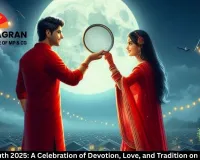Vijayadashami 2025: A Celebration of Good Over Evil Unites Millions
Digital Desk
.jpg)
On October 2, 2025, Hindus across the globe are celebrating Vijayadashami, also known as Dussehra, one of the most significant festivals in the Hindu calendar. This auspicious day, marked by vibrant rituals and community gatherings, symbolizes the eternal victory of good over evil.
The festival, observed on the tenth day of the Hindu month of Ashvin, holds distinct significance in different parts of the Indian subcontinent. For many, it marks the culmination of the nine-day Navratri festival, celebrating the moment Goddess Durga triumphed over the buffalo demon Mahishasur to restore cosmic order. For others, it commemorates the day Lord Rama, an incarnation of Vishnu, defeated the ten-headed demon king Ravana, rescuing his wife Sita.
Traditions and Celebrations
The diverse celebrations reflect the rich regional tapestry of Hindu culture. In many parts of northern, central, and western India, the day is celebrated by burning towering effigies of Ravana, often accompanied by his brother Kumbhakarna and son Meghnad. The dramatic burning ceremony, preceded by the enactment of the epic Ramayana in performances known as Ramlila, is a visual and symbolic destruction of evil.
In eastern states like West Bengal, the day is part of the Durga Puja festival, characterized by Sindoor Khela and vibrant processions that carry clay idols of Goddess Durga for immersion in water bodies, bidding farewell to the deity as she begins her journey back to her heavenly abode.
In Nepal, the festival is celebrated as Dashain, with today being Vijaya Dashami. On this day, families gather for the Tika ceremony, where elders apply a mixture of rice, yogurt, and vermillion on the foreheads of younger relatives. They also place jamara (sacred barley grass) on their heads, blessing them with prosperity, health, and happiness. The exchange is often accompanied by dakshina, a monetary gift.
The festival also sets the stage for the next major celebration, Diwali, the festival of lights, which falls twenty days after Vijayadashami.
Beyond the religious narratives, Vijayadashami carries a profound spiritual message for daily life. Ravana's ten heads are often seen as representing ten human vices, and the festival serves as a powerful reminder to conquer the inner demons of lust, anger, and ego. It is also widely considered an auspicious day to begin new ventures, from education to business.


.jpg)
3.jpg)







